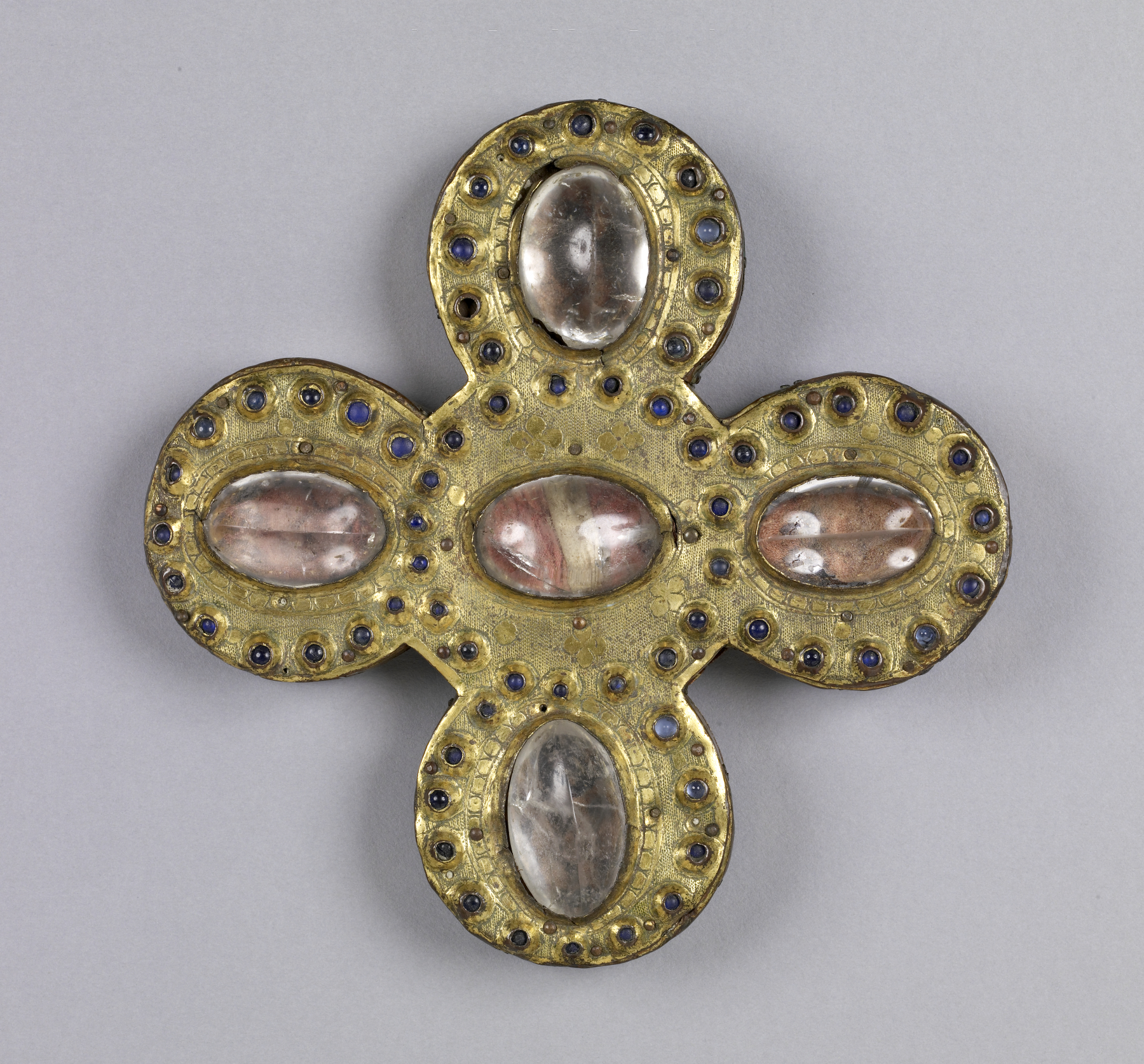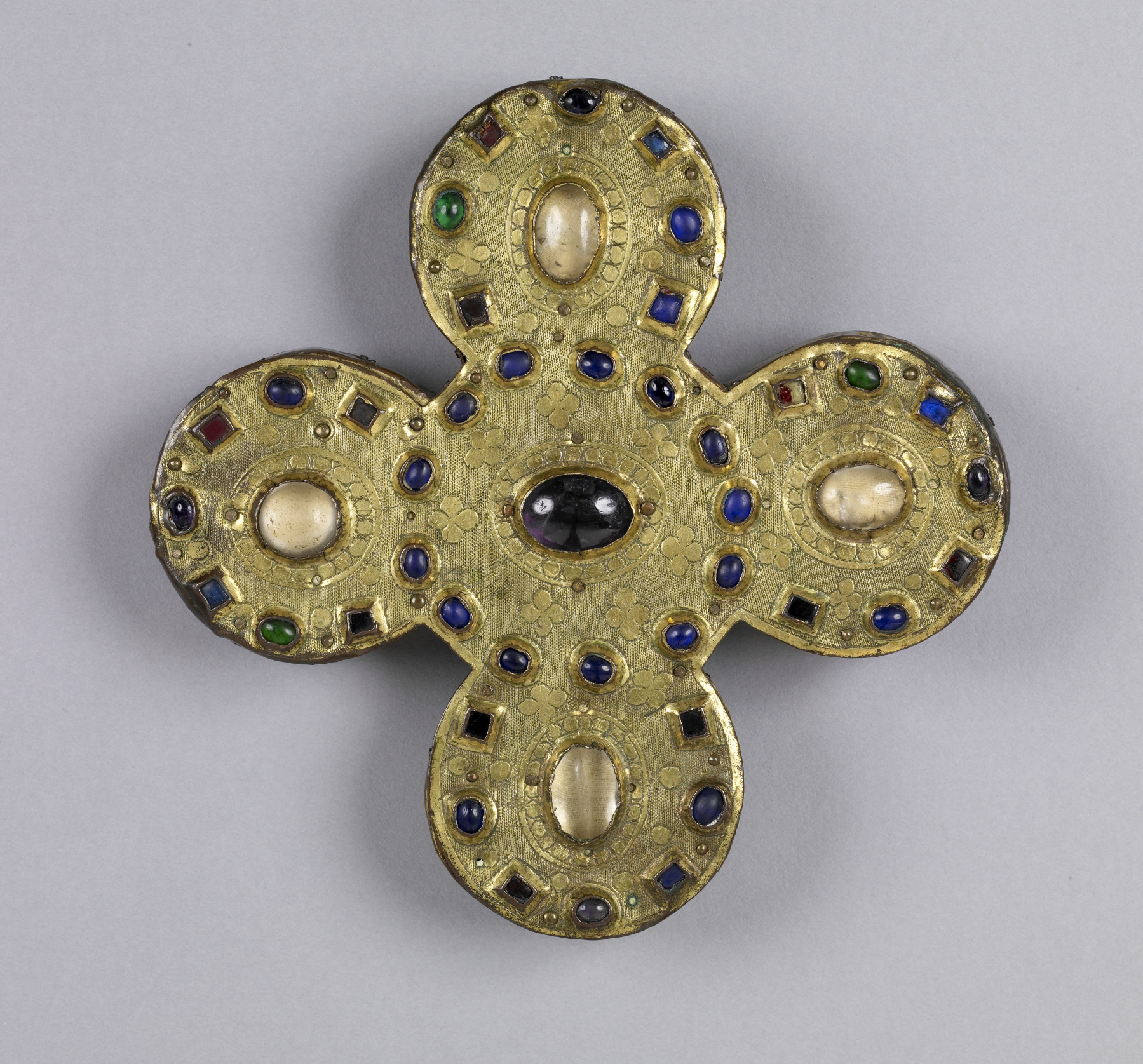Phylactery
(Medieval Europe )
This type of reliquary is called a phylactery (amulet) after the smaller versions of the same shape that believers wore around their necks for personal protection. This phylactery may originally have rested on a sculpted base or have been suspended from a canopy above the altar. Relics were placed under the five large convex crystals, which acted as magnifying glasses.
Provenance
Provenance (from the French provenir, 'to come from/forth') is the chronology of the ownership, custody, or location of a historical object. Learn more about provenance at the Walters.
Joseph Brummer, New York; Joseph Brummer Sale, Parke-Bernet Galleries, New York, May 12, 1949, no. 383; Walters Art Museum, 1949, by purchase.
Exhibitions
| 1984-1985 | Reliquaries and Ritual: Medieval Objects of Devotion. The Walters Art Gallery, Baltimore. |
| 1960 | Magic Black and White: An Exhibition of Black and White Magic. Peabody Institute of the Johns Hopkins University, Baltimore. |
Geographies
France, Limoges (Place of Origin)
Measurements
7 1/2 x 7 1/2 x 1 5/8 in. (19 x 19 x 4.1 cm)
Credit Line
Museum purchase, 1949
Location in Museum
Accession Number
In libraries, galleries, museums, and archives, an accession number is a unique identifier assigned to each object in the collection.
In libraries, galleries, museums, and archives, an accession number is a unique identifier assigned to each object in the collection.
53.139




